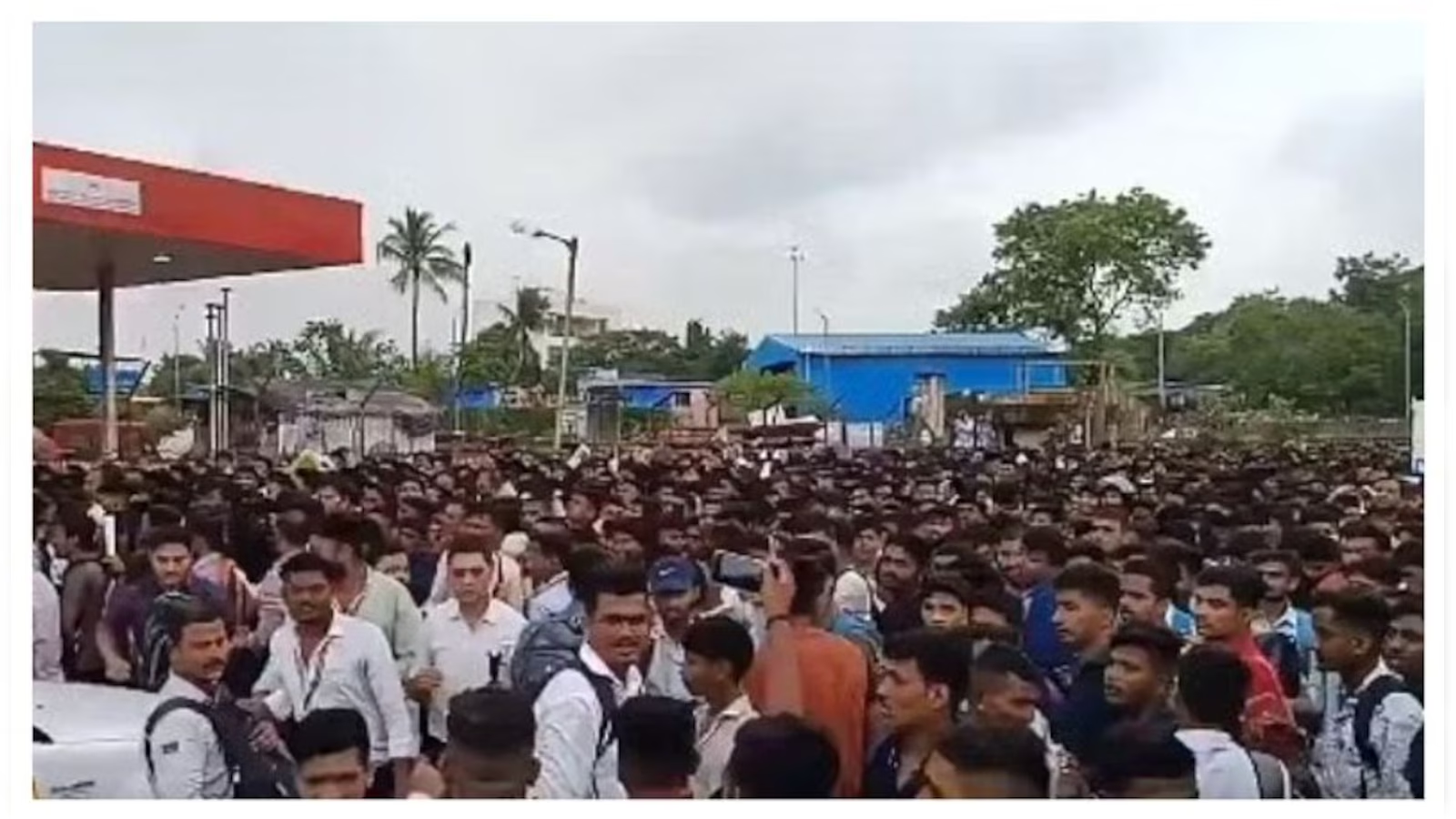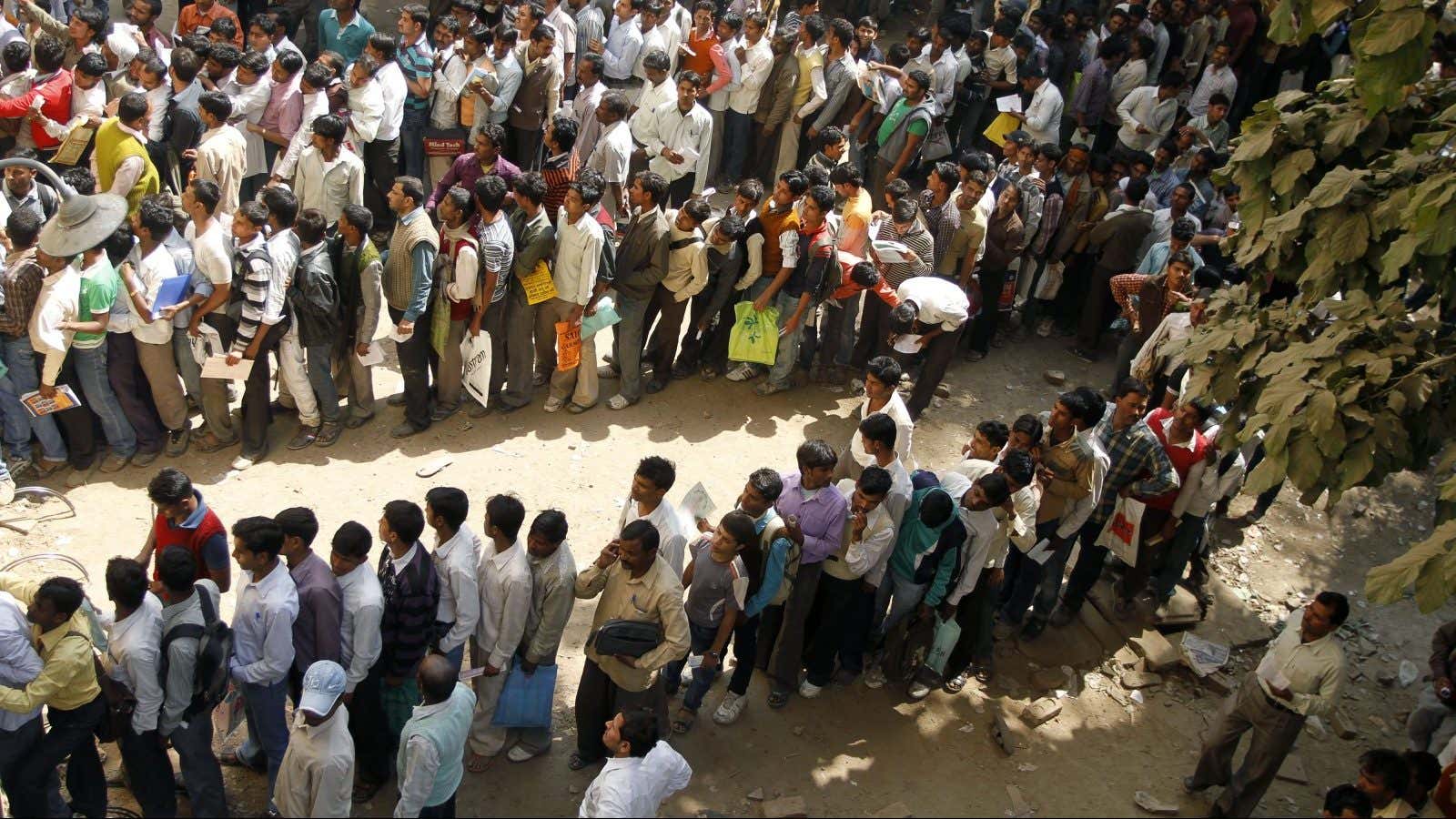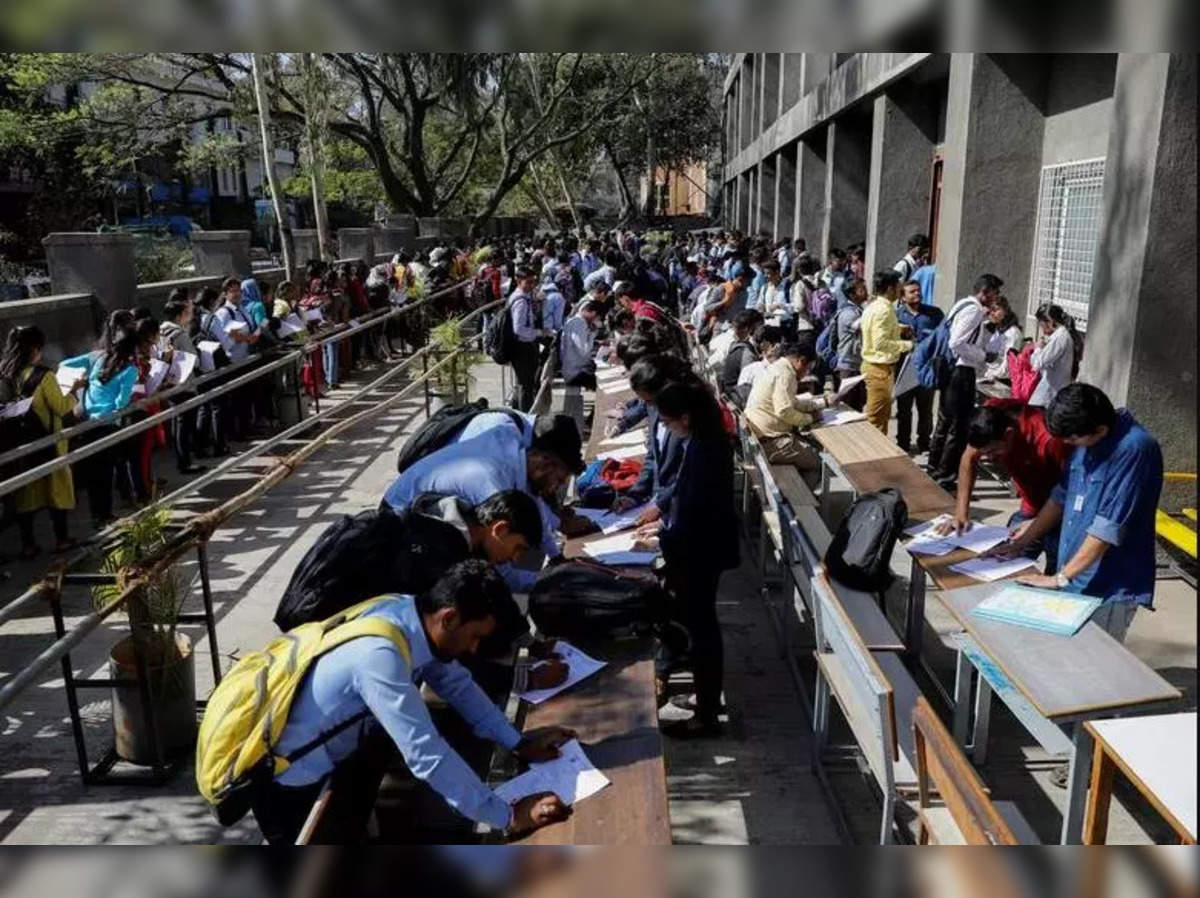Unemployment, The Crushing Weight of It and the DESPAIR!

Unemployment and its Weight on Mental Health, The Heavy Burden of It.
The unemployment in India is so vivid, that the country is drowning.
The massive crowd of job seekers at Air India Airport Services in Mumbai highlights the pressing issue of unemployment in India.
The chaos that erupted at Air India Airport Services Ltd. in Mumbai:
Thousands of people showed up in Mumbai’s Kalina for a walk-in interview conducted by Air India Airport Services Ltd.
The interview was for 1,800 vacancies for the post of handyman and utility agent.
The union claims 50,000 applicants turned up, while the company states that 15,000 people came to submit applications.
The applicants were asked to deposit their resumes and leave amid chaos.
There were 2,216 vacancies for handymen and 22 for utility agents.
The minimum qualifications for the posts were SSC/10th pass and a maximum age of 23.
The salary was fixed at Rs 22,530 per month.
The position was on a fixed-term contract basis of 3 years.

Huge turnout: The overwhelming response to the walk-in interview, with thousands of applicants vying for a limited number of positions, underscores the severity of unemployment in India.
Desperation: The chaos and desperation evident in the crowd suggest that many individuals are willing to take any opportunity, no matter how limited, to secure a job.
Limited opportunities: The fact that 50,000 applicants showed up for 1,800 vacancies (as claimed by the union) or 15,000 applicants for 2,238 vacancies (as stated by the company) highlights the significant gap between job seekers and available positions.
Qualifications: The minimum qualification required for the posts was SSC/10th pass, indicating that even those with basic education are struggling to find employment.
Age factor: The maximum age limit of 23 years for the posts suggests that younger individuals are finding it challenging to enter the job market.
Contractual employment: The fixed-term contract basis of the positions indicates a shift towards temporary or contractual employment, which may not provide job security or stability.
Salary: The monthly salary of Rs 22,530, although decent, may not be sufficient to meet the expectations of many job seekers, especially considering the high cost of living in Mumbai.
The incident underscores the urgent need for the government and private sector to address the unemployment crisis in India, focusing on creating more job opportunities, improving employability, and providing sustainable employment solutions.

India has a high unemployment rate with various factors contributing to that,
Demographic Dividend: India has a large young population, with over 65% of its citizens below the age of 35. However, this demographic advantage has not been fully leveraged, leading to a significant proportion of unemployed youth.
Lack of Job Creation: The Indian economy has not been generating enough jobs to match the growing workforce. The country needs to create at least 8-10 million jobs annually to accommodate new entrants into the job market.
Skills Mismatch: Many Indian graduates and diploma holders lack the skills required by the industry, making them unemployable. There is a need for better vocational training and skill development programs.
Informal Sector: A significant portion of India’s workforce is employed in the informal sector, which lacks job security, benefits, and social protection.
Agricultural Dependence: Agriculture still employs a large chunk of the workforce, but the sector’s growth is limited, leading to disguised unemployment.
Regional Disparities: Unemployment rates vary significantly across regions, with some states like Haryana, Punjab, and Uttar Pradesh having much higher rates than others.
Gender Disparity: Women’s participation in the workforce is low, and they face significant barriers to employment, including social and cultural norms.
Urbanization: Rapid urbanization has led to an influx of migrants seeking employment in cities, putting pressure on urban infrastructure and job markets.
Economic Growth: India’s economic growth has been slow in recent years, leading to reduced job creation and increased unemployment.
To address these challenges, India needs to focus on:
– Encouraging entrepreneurship and start-ups
– Investing in vocational training and skill development
– Promoting manufacturing and infrastructure development
– Enhancing education quality and accessibility
– Addressing gender and regional disparities
– Implementing labor market reforms
– Fostering innovation and R&D

The phenomenon of educated individuals facing unemployment in India is a very grave matter that needs to be addressed.
The education system in India often focuses on theoretical knowledge, which may not align with the practical skills required by industries.
The Indian education system often prioritizes degrees over skills and experience, leading to an oversupply of degree holders without corresponding job opportunities.
India’s job market is highly competitive, with a large number of graduates vying for a limited number of jobs.
Many talented Indians opt for foreign education and employment, leading to a brain drain that deprives the country of skilled professionals.
Job opportunities are often concentrated in urban areas, leaving graduates from rural areas with limited options.
Discrimination based on caste, gender, and other factors can prevent qualified individuals from securing employment.
India’s education system often focuses on preparing students for jobs rather than encouraging entrepreneurship and innovation.
Many students lack access to proper career guidance, leading to choices that may not align with industry demands.
Economic downturns and slow growth can lead to reduced job opportunities, affecting even educated individuals.
To address these challenges, Focus on practical skills, industry-specific training, and vocational education.
Encourage start-ups, innovation, and self-employment.
Provide training on soft skills, communication, and problem-solving.
Foster partnerships to ensure education aligns with industry needs.
Promote job creation and skill development in rural areas.
Address discrimination and promote equal opportunities.
The government’s inability to create enough job opportunities, especially in the public sector, has exacerbated unemployment.
The government’s failure to improve the quality of education and provide relevant skill training has led to a mismatch between the skills of job seekers and industry requirements.
Inadequate investment in infrastructure, such as roads, ports, and airports, has hindered industrial growth and job creation.
Complex labor laws, bureaucratic red tape, and cumbersome regulatory procedures have discouraged entrepreneurship and foreign investment, limiting job opportunities.
Corruption and crony capitalism have led to favoritism and unequal opportunities, further aggravating unemployment.
The government’s inadequate support for Micro, Small, and Medium Enterprises (MSMEs), which are significant job creators, has hindered their growth and employment generation.
Poor execution and lack of monitoring of employment-related schemes have reduced their impact.
The government’s emphasis on capital-intensive industries, rather than labor-intensive ones, has led to limited job creation.
The neglect of the agricultural sector, which employs a significant portion of the workforce, has led to rural unemployment and migration to cities.

The government’s inadequate use of data and research to inform employment policies has resulted in ineffective solutions.
While the government bears a major responsibility for India’s high unemployment rate, there are also other factors like global economic trends, demographic changes, and technological advancements, also play a role. A comprehensive approach involving the government, industry, and civil society is necessary to address the complex issue of unemployment in India.
This incident that happened in Mumbai was not the first one just a few days ago the same thing of overcrowded job applicants showed up in Bharuch, Gujarat.




